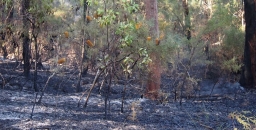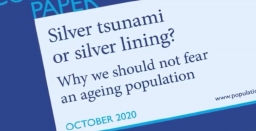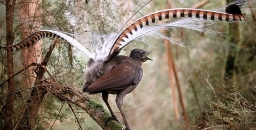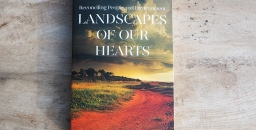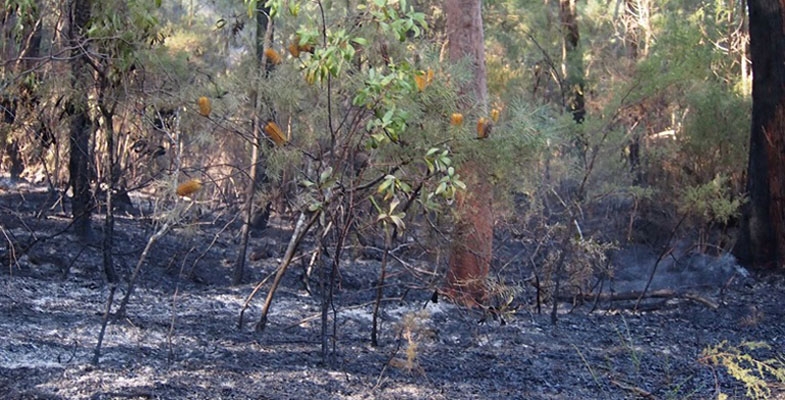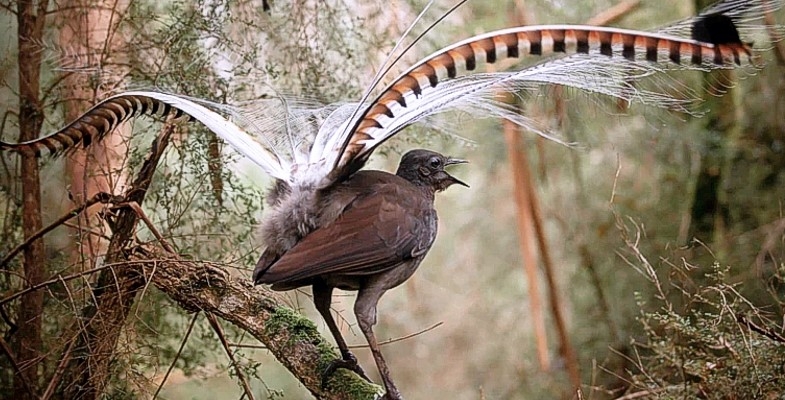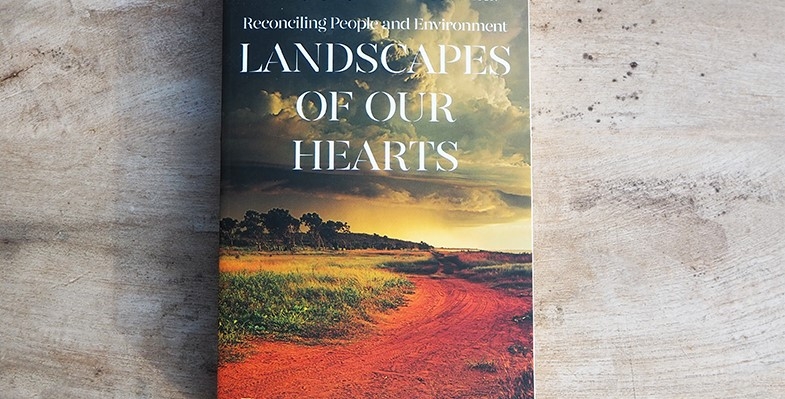STEP Matters 208
- Default
- Title
- Date
- Random
- Welcome to the annual report on the 42nd year of operation of STEP Inc. Believe it or not, 2020 has…Read More
- The Nature Conservation Council held their annual conference on 31 October via Zoom. There were speeches by Matt Kean, the…Read More
- Ku-ring-gai Council is currently developing plans for conversion of two existing sporting fields to synthetic turf. Both could have impacts…Read More
- Now our bushfire season has officially started it’s interesting to look at the devastating fires in the western US: still…Read More
- It seems good that the cost to students of environmental degrees has been cut but the direct government funding has…Read More
- Sustainable Population Australia (SPA) is an independent not-for-profit organisation. They work on many fronts to encourage informed public debate about…Read More
- New research shows lyrebirds move more litter and soil than any other digging animal When you think of lyrebirds, what…Read More
- I came across this book through a very positive review in the Weekend Australian. Its author is ecologist Matthew Colloff,…Read More
Annual Report for the Year to October 2020
Welcome to the annual report on the 42nd year of operation of STEP Inc. Believe it or not, 2020 has been a positive year for STEP. Our membership total has increased significantly and our publications have become very popular. I will explain the reasons for this later in this report.
Sadly, the past year, as we all know, has been very bad for the environment, especially bushland and wildlife. The long-term impacts of the catastrophic bushfires will only be revealed by detailed scientific research. The bleak situation with government policy at the federal level has not improved but at the local and state government level there has been mixed performance.
Activities
The restrictions on group activities imposed to control the spread of the COVID-19 virus have meant that we have not had any talks since March 2020.
AGM
It wasn’t COVID that curtailed participation at the 2019 Annual General Meeting on 12 November. Instead a small bushfire in South Turramurra on a catastrophic bushfire risk day ended up with a lockdown of the area in the late afternoon. Enough brave souls turned up to make a quorum so that the meeting could proceed.
Talks
Talks have been placed on hold since March. We managed to fit in one talk by Dr Ian Percival on Cliefden Caves, a spectacular fossil site in western NSW.
The speaker lined up for the AGM was to speak in April. Professor Culum Brown was to give us some insights into the behaviours of sharks. We hope that talks can be resumed in 2021.
Walks
We ran walks (Two Creeks and the STEP Track) before cancelling our walks program in April. Walks resumed in July with local walks led by Peter Clarke in the areas of Blackbutt Creek, the Wildflower Garden and the Darri Track. John Martyn led a walk in Strickland Forest on the Central Coast in September showing a great diversity of trees and flowers.
We have limited numbers to about 15 to comply with the COVID-19 requirements. Requests for walks in particular areas, provided they are not too far from our local area, are welcome
Publications
We are currently offering free membership for a year to compensate for the lack of activities. Also, anyone who buys a book or map is offered a year’s free membership. There has been a good response to this offer.
As a result of these initiatives our membership is now over 500.
With many people working from home and many types of outdoor activity restricted, taking a break by walking in the bush has become very popular. Sales of our maps have boomed. The South Turramurra Post Office that is close to Lane Cove National Park, has become a successful outlet for map sales.
Committee
The STEP committee has, as always, been a great group of people to work with. We owe a huge thank you for all their efforts. Other individuals have been a great help in specialist areas of our operations.
In particular Helen Wortham has come up with some great ideas that have increased her workload significantly but have led to great boost to our membership and publication sales. There has been a lot of work required by Robin Buchanan and Margery Street in keeping up-to-date and writing submissions on government policies and actions. John Martyn continues to lead walks and add his expertise to all aspects of our work including beautiful photos on Facebook. Peter Clarke continues to be an inspiring walk leader as well as taking on some of the work in putting the newsletter up on the website. Anita Andrew and Jim Wells have kept track of our finances. John Burke and Trish Lynch continue to keep Twitter and Facebook up to date and find lots of interesting items to add on a regular basis.
Accounts
Thanks to the increase in publication sales our net cash balance increased by $4,400 over the year. The Environment Protection Fund balance has reduced as the funds are being applied to the John Martyn Research grant.
Again we thank Allan Donald, Chartered Accountant for his completion of the audit on a pro bono basis.
Newsletter
We are continuing to publish five issues of the newsletter, STEP Matters, each year with most members receiving a pdf version via email. Links to individual topics are also included in the email and are on our website so anyone can pick out particular articles of interest. These articles also have links to previous articles on related topics.
While the newsletter concentrates on local issues and events we also cover broader national environmental issues that affect us all. We aim to be educational but not too technical. I hope they are of interest, but feedback is welcome. Also, contributions from members about local events and developments can be published in the newsletter or on Facebook.
Environment Protection Fund
We continue to maintain the Environment Protection Fund which has Deductible Gift Recipient status so that donations are tax deductible. The Fund’s purpose is to support our environmental objectives. We received a total of $440 in donations in the past financial year.
Due to the uncertainties about restrictions on research processes during the COVID-19 we received a smaller number of applications for the John Martyn Research Grant for 2020. This grant supports student research in an area relating to the conservation of bushland. The award this year went to a University of NSW student who is studying the effects of fire seasonality on seed ecology focussing on the Gymea lily.
Education
STEP is still donating a prize in the Young Scientist Awards run by the NSW Science Teachers Association. We have not done the judging for 2020 yet as the students have been given more time to complete their projects.
Advocacy
The major concern for 2020 has been the NSW government’s decision to fast track construction projects, overriding the normal review and consultation process. It is very disappointing that the Mirvac development of the IBM site that contains critically endangered forest and Powerful Owl habitat is proceeding despite huge community opposition and Council refusal. We will keeping a close eye on the details of the development.
Other local areas of focus have been the rehabilitation of Hornsby Quarry, synthetic turf on playing fields and the perennial problem of illegal mountain bike track construction.
There are several common issues that affect all areas of urban bushland. We are currently working with other groups to compile a database of research on these impacts such as bird strike on high rise glass walls, use of synthetic turf and light pollution. This should speed up the process of preparing submissions.
Conclusion
A community group like STEP works best with many lines of communication. We enjoy a good relationship with other community groups and local council staff. Information sharing is an important part of our work. To that end we appreciate feedback from our members and reports on local issues that we may not be aware of. It is becoming harder to keep track of local developments as the local newspapers have shrunk considerably. Contributions on articles for our newsletter are also welcome – please let us know about events and talks.
Jill Green, President
State Government News
The Nature Conservation Council held their annual conference on 31 October via Zoom. There were speeches by Matt Kean, the Environment Minister, Cate Faehrmann from the Greens and Kate Washington, Shadow Minister for the Environment.
The good news is the NSW government’s policy of aiming for net zero greenhouse gas emissions by 2050 and support for renewable energy projects in spite of the federal government’s refusal to make any commitment.
Matt Kean also announced that the goal set last year of declaring 200,000 ha of new national park land had been exceeded. He went on to announce the goal will be extended to adding a total of 400,000 ha by the end of 2024. The Narriearra Caryapundy Swamp National Park, the largest area, in the far north west of the state has now been formally gazetted. Additions have been made to several other national parks such as Capertee (Regent Honeyeater habitat) and Travelling Stock reserves that have already been managed by NPWS.
The speeches demonstrated the obfuscation about koala protection that has been apparent in the Coalition for many months. Matt Kean has announced he wants the koala population to double by 2050 but so much habitat has been destroyed in the bushfires. Any plan is confounded by forest logging and land clearing decisions by other members of the Coalition. The recent Upper House enquiry found that koalas are at risk of functional extinction by 2050.
Loss of Koala Habitat and Land Clearing
- Cumberland Plain Conservation Plan has recently been subject to consultation. It covers over 15,000 ha in south-western Sydney that is currently rural land but is earmarked for development to allow for population expansion. It aims to provide long-term certainty about areas that will be conserved to avoid piecemeal zoning decisions.
If it goes ahead only about one-third of the area of native vegetation will be conserved. The plan allows for the loss of a further 1,014 ha of critically endangered Cumberland Plain Woodland to development. There are only 6,400 ha left. The rest will be marked as ‘urban capable’. Large areas that are Sydney’s food bowl could go under concrete as well as more koala habitat.
In this area koala habitat will be protected in the new Georges River National Park but koala conservation groups are very concerned that habitat will be fragmented and essential corridors will be lost or cut off by roads. Of particular concern is the future of the chlamydia free population near Campbelltown.
- Lend Lease is developing the Gilead Estate, land that is core koala habitat in Appin between the Nepean and Georges Rivers. The Chief Scientist has recommended that habitat corridors be maintained but some of the preservation requirement would encroach on this land. It has been left to Lend Lease to do the right thing!
- One of the fast-tracking decisions made by the government is for another housing development (280 lots) by Walker Corporation at Appin that is next to 60 ha of critical koala habitat. This development has been knocked back by the local council several times.Then we have the approval by the federal Environment Minister for the Brandy Hill Quarry extension near Port Stephens – 52 ha lost.
- In rural areas, in particular the north of the state, a Local Land Services Amendment (Miscellaneous) Bill proposes changes to the regulatory framework applicable to native vegetation and private forestry. The EDO believes that the changes proposed by the bill will remove important protections for koala habitat and will further facilitate excessive and inappropriate land clearing. The Total Environment Centre has dubbed this the Koala Destruction Bill.
- Then there is the modification made to the Koala SEPP after the threats from the Nationals to leave the Coalition. Councils with koala populations can choose to develop a strategy to manage koalas in their area. But the SEPP does not actually stop koala habitat from being bulldozed if the development is approved by council.
- Last, but not least, is the latest government proposal to amend the Rural Fires Act that will lead to more land clearing. Property owners will be free to clear all their land that is within 25 m of fencing. The landowner on the other side of the fence can be required to do the same. This includes public landowners such as national parks. This was not a recommendation of the bushfire enquiry. It is hard to see the reason for this proposal. It will be introduced by regulation. Is it aimed at reducing the cost of replacing fencing after a fire? In this case it is not a fire protection measure at all. The detail has not been released.
It will lead to broad-scale clearing of endangered forest and habitat for grazing and other purposes unrelated to hazard. In metropolitan rural areas where blocks are small this regulation could allow the total block to be cleared, a lovely invitation for developers to move in.
What we need is a Great Koala National Park to be formed out of key state forests in the north. Some of these forests are being logged but this has to stop if a resilient population of koalas is to survive.
Synthetic Turf Battles to Continue
Ku-ring-gai Council is currently developing plans for conversion of two existing sporting fields to synthetic turf. Both could have impacts on critically endangered ecological communities and, potentially, neighbouring national parks.
The community has only seen aerial diagrams of concept plans and detailed plans are still to be completed so there is no information about tree removal, earthworks drainage systems, etc.
Naturally the sporting groups are all in favour. In both cases the local MPs are promoting the projects and large grants are coming from government sources.
In both cases Council has resolved to proceed with the detailed plans. They are going through the approval process based on Part V of the EPAA Act which means the infrastructure can be built without consent, which means that Council does its own assessment. However, before a project can proceed Council has to prepare a detailed environmental assessment, a review of environmental factors (REF).
The REF examines the significance of likely environmental impacts of a proposal and the measures required to mitigate any adverse impacts. The preliminary reviews completed in both cases conclude that there will be no impacts serious enough to stop the project proceeding.
Norman Griffiths Oval
Following the decision not to proceed with the plan for artificial turf on Mimosa Oval (see STEP Matters, Issue 204) attention has returned to Norman Griffiths Oval. The original proposal for artificial turf on this oval was knocked back because of the high cost of stormwater management. The oval currently acts as a detention basin for water coming from the upper reaches of Quarry Creek and higher parts of Bicentennial Park.
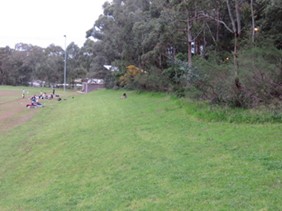
Bank above Norman Griffiths Oval
The cost of installing the turf is currently $1.4m, $500,000 of which has come from the state government with the remainder from Council ($511,000) and various sporting organisations. The extra cost of the recommended stormwater detention system is estimated at $1.25m to be funded from money previously allocated for the indoor sports centre on the old nursery site near the St Ives Wildflower Garden that has been abandoned.
STEP’s main concerns about the project that may be addressed in the detailed design are:
- Disturbance to the moisture levels of the bank above the oval where some 30 native plants including 7 orchids have been found, with some uncommon species.
- The grassed area above the oval should be retained as this is frequently used as a source of food by birds.
- The concept plan shows that parts of the surrounding Sydney Turpentine Ironbark Forest vegetation will be removed to provide pedestrian pathways. These should be changed.
- The flood reports show that there will still be overflows from detention system in a severe storm and additional measures may be needed to prevent erosion and ensure ecosystem health along Quarry Creek.
- There could be pollutants in the runoff from the synthetic surface depending on the materials chosen.
Council, bushcare groups and NPWS have invested considerable effort into the health and regeneration of the Quarry Creek area over the last 20 years. The creek water quality has been significantly improved and there has been incredible regeneration of the surrounding bushlands. We don’t want to see this work being jeopardised.
Council has commissioned a separate flood risk report that covers areas below the oval. Bicentennial Park covers a large area that is the catchment for Quarry Creek that flows down under Yanko Road and into Lane Cove National Park. In a one in 50 year storm event Yanko Road could be flooded. Mitigation measures will be expensive but are a separate consideration.
Barra Brui Sportsground
Barra Brui is surrounded by endangered ecological communities, Sydney Turpentine Ironbark Forest and Duffy’s Forest on three sides and, on the eastern side, Garigal National Park is below the site with the land falling away steeply. A creek flows on the northern side of the ground and down into the valley.
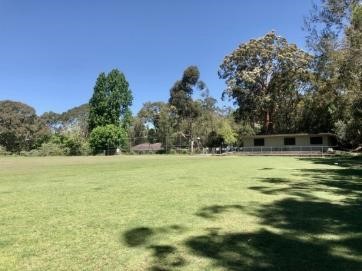
Barra Brui Oval with magnificent Angophora in flower
This ground has been considered for conversion to synthetic hockey field since 2018. In this case the field will be a wet field. The ground is sprayed with water to control the ball speed and reduce the surface temperature. Therefore tanks are needed to store the water as well as gutters to control the flow of water.
The ground is currently used for cricket and soccer as well as being the local community play area and off-leash dog park. It is not clear whether cricket and soccer matches would continue to be possible. The clubhouse and parking would also be improved. The aim is to have 100 car parking spaces.
The cost is substantial, a total estimate of $4.1m: $2.25m from the Greater Sydney Sports Facility Fund, $500,000 further government funding, $250,000 from the Northern Sydney and Beaches Hockey Association and $1.1m from Council.
At the meeting on 30 June Council decided to engage in preliminary design/scope studies to inform detailed costings and the feasibility of project design options.
In this case the concerns that require more information are:
- Floodlighting is to be improved so the spill of light into the surrounding bushland may be reduced but the field may be used more often.
- How the forest will be affected including 11 important trees that the arborist report states ‘with a high potential to contribute to amenity so any adverse impacts on them should be minimised’.
- The impact of the bushfire Asset Protection Zone on the surrounding endangered ecological communities.
- Water management details are not available including controls of pollutants and stormwater and impacts on the riparian zone next to the field.
- Will the field be a bushfire hazard? There will be plenty of water supply but will there be controls to turn on the water in the case of a fire?
- Clearing required to create the necessary car parking space.
How Western USA Forests Respond to Fire
Now our bushfire season has officially started it’s interesting to look at the devastating fires in the western US: still burning, their season apparently with some weeks to go! I got interested through visits to relatives in California and British Columbia, including in the latter case in 2014 when BC had many interior blazes and Vancouver was smoke-hazy, however this article is tempered by my frustrating lack of first-hand knowledge and draws heavily on on-line info.
Although North America's fire-prone latitudes are roughly a mirror image of our own, their fire weather patterns differ in some respects, in California’s case being driven by the late summer–autumn ‘Santa Ana’ winds, essentially high pressure driven easterlies – very strong and very dry, accelerating down from the interior mountain ranges. You may have seen the satellite images of smoke plumes hundreds of kilometres long streaming westwards over the Pacific. Like here, their blazes may be started by lightning, clashing power lines and careless or criminal acts though I haven’t chased up statistics. Quite terrifying dry lightning storms have been a feature of some of the recent outbreaks.
Fires, plant communities and vegetation
What are the vegetation characteristics of the often mountainous western terranes and how do they resemble or differ from ours in surviving, adapting and recovering from fire? Well there’s an abundance of information available on-line with a lot of names and terms new to me, and it’s crazy to go for too much detail, but let’s look at examples of the main plants, communities and their fire issues.
Chapparal is the summer-dry shrubland and heathland interspersed with grassland in southern California and Mexico that most resembles Mediterranean-type plant communities in Australia. Like shrublands of south-west WA and the fynbos of South Africa it is regarded as a biodiversity hotspot. It is fire prone and its low structure provides little resistance to winds like Santa Ana, therefore fire can engulf it extremely swiftly. But not surprisingly, its tough shrubs like Manzanita sprout and regenerate from woody rootstocks – some pictures on the web of green sprouts rising from nests or corrals of burnt sticks are remarkably familiar. Also many seeds of its common species are fire dependant. And like Australia, seeds of plants like Californian fire poppy germinate to create prolific post-fire wildflower displays.
Coniferous forests with many different tree species have gone up in smoke and I was interested to read what their powers of resistance and recovery might be. Do they resprout or merely re-seed?
Ponderosa pine, Pinus ponderosa is the most widely distributed pine species in North America and a dominant and key one in western forests. It has a distinctive, thick, reddish brown, platy ‘jigsaw puzzle’ bark and been has recorded up to more than 80 m tall. The bark is reasonably fire resistant but its issues with fire have many other interesting aspects. Park-like old growth forests of tall, widely-spaced trees familiar to early settlers and Native Americans, and governed by natural fire regimes and native burning, have been gradually replaced by massive regrowth of multiple, closely-spaced young trees, creating tinder box conditions in hot, dry, windy weather. Abundant saplings can cause a ladder fuel effect with ground fires flaming up and consuming canopies, and thereafter whole forests. The ponderosa fire issue is complex but well researched and if interested I encourage you to read this article.
We are familiar with seed cones that release seeds by fire, but several other species of conifer have this characteristic, where cones are tightly bound and seeds protected by resin only to burst open and release their seeds. Lodgepole pine is one such species and is notably quick to germinate after fire (see Fig 1).
You’ll be aware of Californian redwoods Sequoia sempervirens especially if you’ve visited memorable Muir Wood near San Francisco or any of the reserves of these giant trees growing within a 750 km long near-coastal zone. Yes, they can and do burn but are quite fire resistant having tough, thick bark and very high crown bases, and they also resprout epicormically quite readily. Often their forests have open floors and this is encouraged in a general movement towards hazard reduction burning of understory where possible. (The Redwood Trees will be Just Fine)

Fig 1. Lodgepole pine post-fire regrowth in Montana, courtesy of Yale School of the Environment website
Some more notes and thoughts
Bark beetle infestations
If you look at some of the pictures of infested dying coniferous forests you’ll be stunned and saddened – whole forests wiped out by one or more of the 600 or so species of bark beetle that burrow into the cambium and interrupt the water and nutrient flow. Such dead and dying forests are obviously particularly fire prone.
Snags
This is a common North American term for standing dead trees, from a variety of causes like fire, lightning, beetle attack, disease or old age. But there is a positive note as they are regarded as key wildlife habitats providing homes, nesting sites and food for wildlife. There are whole forests of snags from recent fires, but there are stories and instances of birds such as woodpeckers going in and feasting on dead and dying grubs and beetles, and the dead and broken trees provide many hollows and nesting sites.
Resprouting
Trees can recover by sprouting from lignotubers. But we are familiar with the abundant fuzzy post-fire epicormic regrowth on eucalypts and many other Australian species, and apart from redwoods I didn’t come up with clear examples from the mountain forests of the US west. But let’s not forget that not all eucalypts do this as a matter of course.
Fig 2 was taken in Thredbo Valley in 2010 and shows a dead forest of alpine ash, Eucalyptus delegatensis, floored by a dark green mini-forest of saplings from the seed bed. Many western US forests pictured on the web show a strongly similar recovery pattern (see Fig 1). However, others may be laid open to invasive species or gradual conversion to shrubland or grassland.

Fig 2. Alpine Ash forest post-fire at Thredbo
Future issues
Donald Trump famously said that poor forest management not climate change had caused the current Californian and Oregon fires. The statement was made in the wrong context from a highly biased viewpoint but surprisingly there’s an element of truth lurking in it. It’s generally regarded that the loss over one and a half centuries of widely spaced, park-like old growth forest and its replacement with dense regrowth has intensified the fire risk, and that human influence is a prime cause. There seems to be a general move favouring closer fire management and hazard reduction burning of ground vegetation and understory that mirrors our own challenging situation, but I’m drifting out of my depth here and I’ll finish on that note. Finally, this link is a good concise read.
Further reading: Struzik, E., 2017, Firestorm. How Wildfire Will Shape Our Future. Island Press
John Martyn has been pondering for some time how forests in the western US resist, react and recover from fire. Do epicormic growth and root sprouting play a role or is it mainly seed based? He decided to do some research and here are his preliminary findings.
Cut to University Funding for Environmental Science – What Consequences for our Future?
It seems good that the cost to students of environmental degrees has been cut but the direct government funding has been cut too. Student costs to take effect from 2021 have been cut from $9,698 to $7,700 per year but the total university income per student will be $24,200 compared to $34,144, a cut of 29%.
Environmental work involves the use of technology (drones, satellites, DNA analysis) as well as field work, all very expensive to provide. No doubt the universities will have to cut the quality of the experience they can provide to students and/or the number of places available. It might be cheaper for students to study, but how ‘job-ready’ will they be? Will the mantra of the government’s university fee changes be achieved that workers will be encouraged into STEM fields?
Australia’s response to climate change already being experienced and planning for the future requires the use of environmental expertise. Even the COVID-19 pandemic has been linked to an increase in human–wildlife interaction following land clearing. New diseases are emerging all the time that have a debilitating effect of people’s health, eg Lyme disease and Ross River virus.
Once again, this government has demonstrated their short-sighted approach to managing our most important asset, a healthy environment.
Why we Should not Fear the Aging Population
Sustainable Population Australia (SPA) is an independent not-for-profit organisation. They work on many fronts to encourage informed public debate about how Australia and the world can achieve an ecologically sustainable population.
SPA has recently published a discussion paper titled Silver tsunami or silver lining? Why we should not fear an ageing population by Dr Jane O’Sullivan who is Honorary Senior Research Fellow at the University of Queensland School of Science.
The paper dispels the myths about the need to have high population growth in order to maintain Australia’s economic wellbeing. Fears are often expressed by politicians and economists that an ageing population will make health and aged-care costs unaffordable and we will not have enough workers and tax-payers. The main points from the paper are summarised below. Please read the paper to see the comprehensive discussion of these issues.
Ageing is inevitable but will reach a stable point in the future
Like all developed countries we have been going through a demographic transition since early in the 20th century. In those days high birth rates were countered by high mortality including at infant ages. Since the increase in life expectancy arising from the development of antibiotics, vaccines and medical technologies, births have been exceeding deaths even though family sizes are now smaller. Now the average age has risen and will continue to rise in line with the increased longevity. This demographic ageing represents the final stage of the inevitable demographic transition that will lead to a stabilisation in the total population numbers and age distribution unless a high level of immigration is added.
The discussion paper includes projections comparing the proportions of the population in the working age bracket as usually chosen by statisticians (age 15 to 64) and those aged 65 and over, now and into the future and then adds the effect of immigration to project the age composition at the stabilisation point. They show that the proportion of people aged 65 and over is likely to be in the range of 30 to 35% but will never outnumber the working age population. Currently Australia’s population aged 65 and over is 16% compared 65% in the age 15 to 64 bracket.
Boosting population growth does not solve ageing, but is ageing a problem anyway?
Immigration, by bringing in more ‘working age’ people, will delay the stabilisation process. The paper goes on to look at the effects of a range of growth levels (natural increase plus net immigration) that are summarised in the table below (copied from the discussion paper). Growth is defined as a percentage of the then current population. For example, recent growth of 1.6% equates to the need to provide housing and services for an extra 400,000 pa. When population grows to 40 million, which could happen by 2050 if growth returns to recent levels, there would be an extra 640,000 people to accommodate.
Fig 3C shows the costs of provision of population based necessities such as health, aged care, education and infrastructure, as a proportion of GDP. This data is the essential part of the paper’s arguments that growth comes with a significant cost.
The cost of population growth exceeds the cost of ageing
As Fig 3C shows, immigration is expensive. The cost of extra infrastructure to support population growth outweighs the small extent to which that population growth could lessen relative pension, health-care and aged-care costs. A figure of $100,000 is quoted as the infrastructure costs of each new resident. Most of this infrastructure cost falls to state and local governments, and private individuals, rather than the federal government. The national interest should not be narrowly defined as achieving a balanced federal budget while the states are having to increase their revenue raising to provide new infrastructure.
The paper concludes that high levels of immigration can slow, but not prevent, population ageing. But the cost of extra infrastructure and education to sustain population growth is greater than the avoided costs of pensions, health care and aged care.
Will we run out of workers and taxpayers to support the non-workers?
One of the main arguments for increased population is the dependency drag on the economy. This ‘dependency ratio’ assumes that those over-65 depend economically on people aged 15-64, and that there will not be enough people of ‘working age’ to perform all the required work.
The paper presents the argument that there is no evidence that boosting the working-age population has increased employment per capita. Instead, Australia’s labour market has been oversupplied, with high immigration contributing to youth underemployment, wage stagnation and rising inequality through increased housing costs.
Many European countries with slow population growth have higher productivity growth and youth unemployment than Australia.
With the same demand for workers but fewer working-age people competing for jobs, there is less unemployment and underemployment. Improved wages and conditions attract more people into the workforce. This is what economic theory expects the labour market to do. But the economic models which predict that ageing will constrain the workforce have ignored these feedbacks.
The paper found no credible evidence that ageing will constrain Australia’s workforce, productivity or GDP. Tax contributions per adult would increase due to higher wages and workforce participation. In contrast to the common claims of a fiscal burden, they anticipate a fiscal dividend.
Health and aged care costs
While aged care and health care will likely increase as a share of national spending, the rise will be much smaller than the rise in number of retirees because older cohorts are getting healthier and better services are extending their independence. The major increases in health costs have been due to new, improved and more services per person. Longevity has deferred, rather than extended, the period over which the elderly need more health care and aged care.
There is not enough room here to summarise the detailed discussion in the paper on issues such as taxation, retirement incomes and intergenerational equity and the myths trotted out by the growth lobby. This lobby, including the likes of demographer Liz Allen from ANU and the Scanlon Foundation are comprehensively debunked by this paper.
Conclusion – silver tsunami or silver lining?
Those with vested interests in population growth have overstated ageing concerns, to make high immigration seem essential. The resulting negative social and environmental impacts continue to accumulate for no net economic gain.
The paper concludes that an older, numerically stable or decreasing population offers many benefits for quality of life, environmental sustainability and economic stability. Depopulation dividends could make us richer, smarter, safer, fairer, greener, healthier and happier.

Fig 3. Elevated population growth rates don’t lessen fiscal costs
In Fig 3, the authors compare five projections that achieve approximately steady population growth rate and age composition. (While these projections are produced by varying immigration, raising birth rates would yield fairly similar results.)
Fig 3B shows that if our population grew at 2% per year (projection E), we could keep the proportions of children, 15-64 year-olds and over-65s roughly the same as we currently have (until we are too overpopulated to keep growing).
But, as Fig 3C shows, the cost of infrastructure and education to support this growth outweighs any benefit from lowering costs related to elderly citizens. On the other hand, if we had no population growth, or even a gentle decline, then there would be a higher proportion of older citizens, but the savings on infrastructure and education would pay for the increase in pensions, health care and old-age care.
New Research Shows Lyrebirds Move More Litter and Soil than any other Digging Animal
New research shows lyrebirds move more litter and soil than any other digging animal
When you think of lyrebirds, what comes to mind may be the sound of camera clicks, chainsaws and the songs of other birds. While the mimicry of lyrebirds is remarkable, it is not the only striking feature of this species.
In research just published, we document the extraordinary changes that lyrebirds make to the ground layer in forests in their role as an ecosystem engineer.
Ecosystem engineers change the environment in ways that impact on other species. Without lyrebirds, eastern Australia’s forests would be vastly different places.
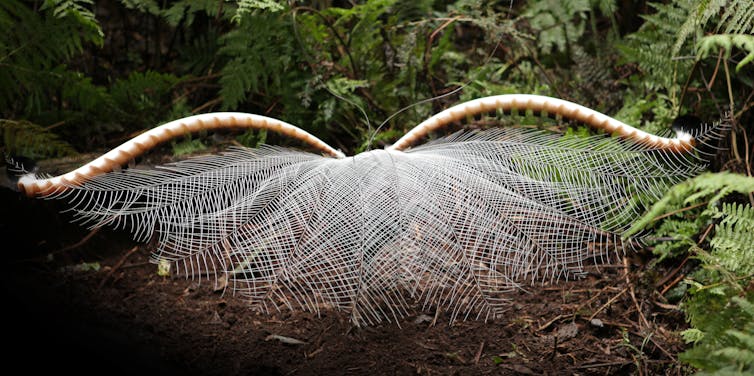
What is an ecosystem engineer?
Ecosystem engineers exist in many environments. By disturbing the soil, they create new habitats or alter existing habitats, in ways that affect other organisms, such as plants and fungi.
A well-known example is the beaver, in North America, which uses logs and mud to dam a stream and create a deep pond. In doing so, it changes the aquatic habitat for many species, including frogs, herons, fish and aquatic plants. Other examples include bandicoots and bettongs.
The Superb Lyrebird acts as an ecosystem engineer by its displacement of leaf litter and soil when foraging for food. Lyrebirds use their powerful claws to rake the forest floor, exposing bare earth and mixing and burying litter, while seeking invertebrate prey such as worms, centipedes and spiders.
To study the role of the lyrebird as an engineer, we carried out a two-year experiment in Victoria’s Central Highlands, with three experimental treatments.
First, a fenced treatment, where lyrebirds were excluded from fenced square plots measuring 3m wide.
Second, an identical fenced plot but in which we simulated lyrebird foraging with a three-pronged hand rake (about the width of a lyrebird’s foot). This mimicked soil disturbance by lyrebirds but without the birds eating the invertebrates that lived there.
The third treatment was an unfenced, open plot (of the same size) in which wild lyrebirds were free to forage as they pleased.
Over a two-year period, we tracked changes in the litter and soil, and measured the amount of soil displaced inside and outside of these plots.
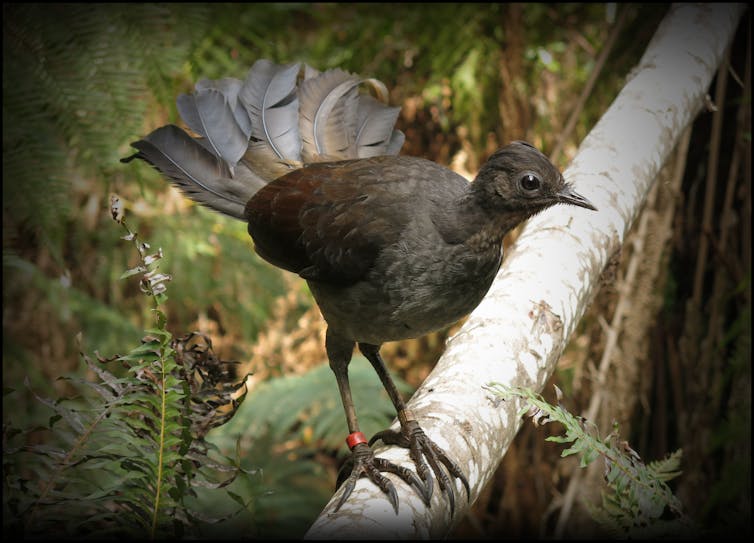
Lyrebirds dig up a lot of dirt
On average, foraging by wild lyrebirds resulted in a staggering 155 tonnes per hectare of litter and soil displaced each year throughout these forests.
To the best of our knowledge, this is more than any other digging vertebrate, worldwide.
To put this in context, most digging vertebrates around the world, such as pocket gophers, moles, bandicoots and bettongs, displace between 10–20 tonnes of material per hectare, per year.
To picture what 155 tonnes of soil looks like, imagine the load carried by five medium-sized 30 tonne dump trucks – and this is just for one hectare!
But how much does an individual lyrebird displace? At one study location we estimated the density of the lyrebird population to be approximately one lyrebird for every 2.3 hectares of forest, thanks to the work of citizen scientists led by the Sherbrooke Lyrebird Study Group.
Based on this estimate, and to use our dump truck analogy, a single lyrebird will displace approximately 11 dump trucks of litter and soil in a single year.
Changes to the ground layer
After two years of lyrebird exclusion, leaf litter in the fenced plots was approximately three times deeper than in the unfenced plots. Soil compaction was also greater in the fenced plots.
Where lyrebirds foraged, the soil easily crumbled and the litter layer never fully recovered to a lyrebird-free state before foraging re-occurred.
This dynamic process of disturbance by lyrebirds has been going on for millennia, profoundly shaping these forests. For organisms such as centipedes, spiders and worms living in the litter and soil, the forest floor under the influence of lyrebirds may provide new opportunities that would not exist in their absence.
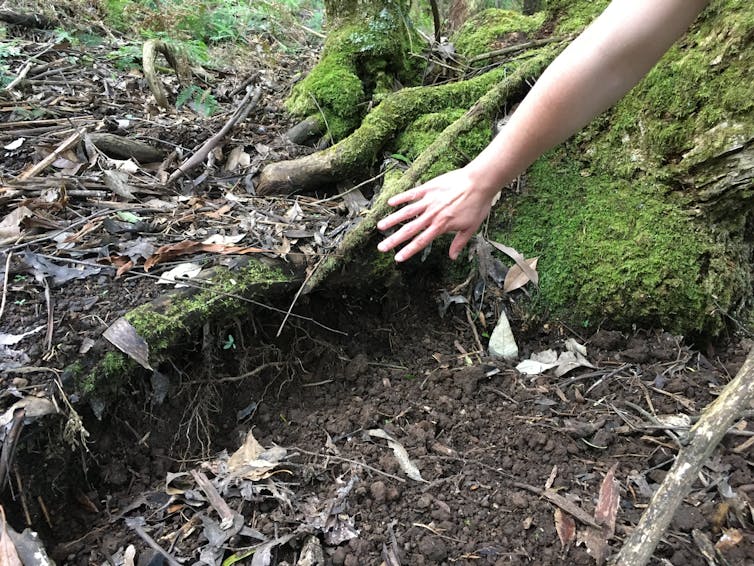
An ecosystem ravaged by fire
The Australian megafires of 2019/20 resulted in approximately 40% of the Superb Lyrebird’s entire distribution being incinerated, according to a preliminary analysis by BirdLife Australia.
So great was the extent of these fires that the conservation status of the lyrebird has been thrown into question. That the conservation status has fallen – from “common” to potentially being “threatened” – from a single event is deeply concerning.
Loss of lyrebird populations on this scale will have potentially far-reaching effects on forest ecology.
In the face of climate change and a heightened risk of severe wildfire, understanding the role that species such as the Superb Lyrebird play in ecosystems is more important than ever.
Without lyrebirds, eastern Australia’s forests would be vastly different places, with impacts extending well beyond the absence of their glorious song to other animals who rely on these “ecosystem engineers”.![]()
Alex Maisey, PhD Candidate, La Trobe University and Andrew Bennett, Professor of Ecology, La Trobe University
This article is republished from The Conversation under a Creative Commons license. Read the original article.
Book Review – Landscapes of our Hearts
I came across this book through a very positive review in the Weekend Australian. Its author is ecologist Matthew Colloff, Honorary Senior Lecturer at the Fenner School, ANU. Matthew grew up in rural Kent developing a strong allegiance to the natural world, something I immediately related to as it was close to my own experiences growing up in Middle England. He carried this affinity through his 23 years with CSIRO where he spend much time on the complex and highly politicised natural and man-made environments of the Murray Darling Basin. But the book extends far beyond that both geographically, ecologically and conceptually.
How do we as individuals relate to landscapes and nature and how did our early encounters and memories stay with us and colour our views of the natural world? Are there particular holidays, outings, travels and experiences, fishing in a quiet river, listening to the cicadas and sea sounds on a hot afternoon camped in a forest by the beach? Or how do we relate to the interwoven intricacies of bush, parks, suburbs and city? But what of First Nation people whose connection with the landscape stretches back for more than 50,000 years; their sacred and canoe bark trees that have survived in our parks: do we cut them down when they grow old and pose safety risks? And how do the farmers who now occupy their cleared former country cope with and live with the vagaries of drought, floods, bushfires, rising salinity and a warming world.
This book is wide ranging and thoughtful and full of stories and anecdotes, both historical and from his own experiences: like getting bogged alone, far from a main road in mallee country or releasing a captive turtle back into the wild that had been rescued from drought-shrunken pools. The writing style is fluid and readable and hard to put down, but most of all the book is thought provoking and makes you examine your own attitudes, and ponder the future for our country, our biodiversity and the survival of the landscapes that we love.
Matthew Colloff, 330 pages: Thames and Hudson: trade paperback RRP $35
Reviewed by John Martyn




